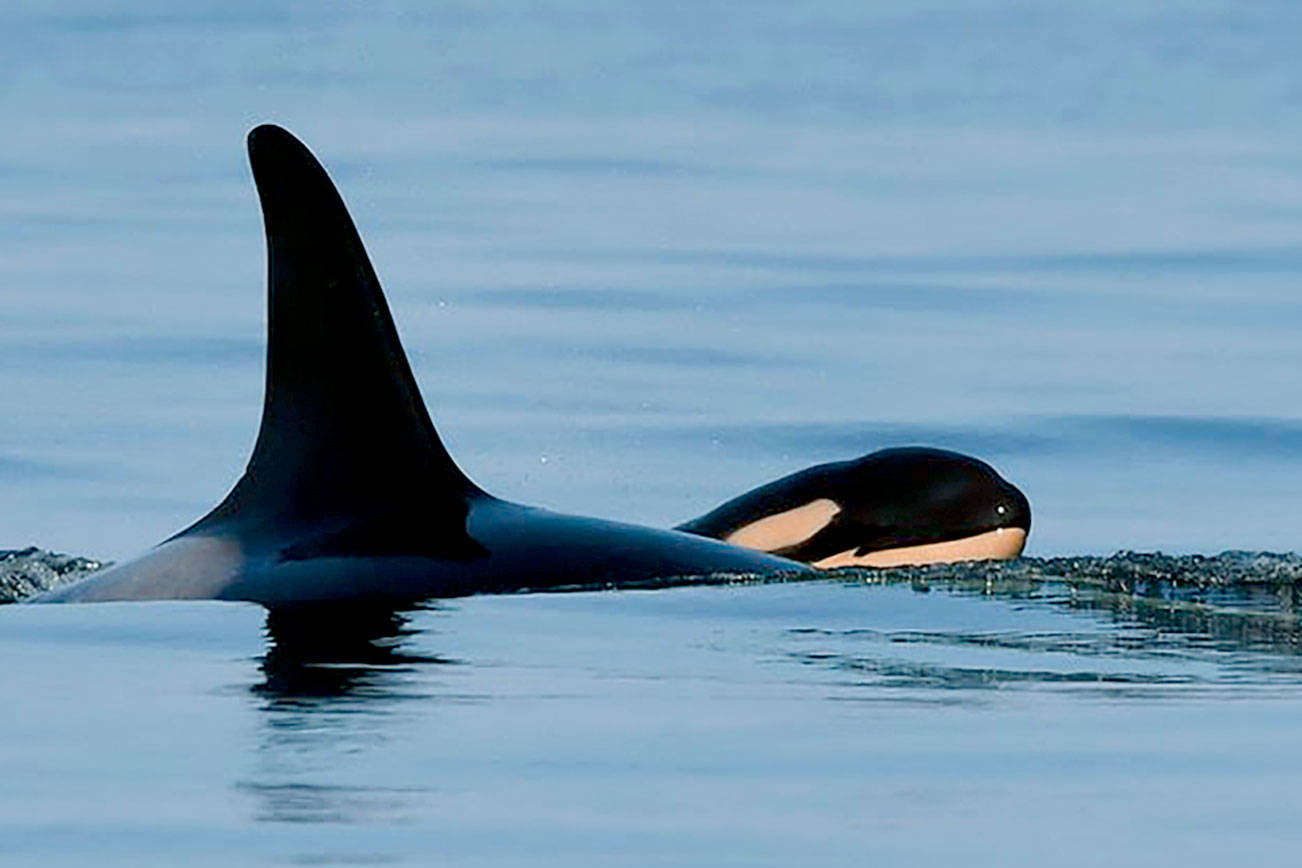Submitted by the Pacific Whale Watch Association
The Pacific Whale Watch Association and every one of our professional members are thrilled by the addition of a new baby orca in Jpod. We are proud and pleased to have been the first to spot the new addition, playing a significant role in alerting researchers to the calf’s presence and coordinating efforts to locate and identify the new baby.
“As we were watching the greeting ceremony between J and L pods unfold Saturday, it felt like a special day on the water,” said Sarah McCullagh, a professionally trained captain and naturalist for San Juan Safaris of Friday Harbor. “We first saw J35 and her son J47 off by themselves away from the main group, then as we watched we quickly realized that there was a very small fin tucked in next to them. We called the Center for Whale Research over to investigate and sure enough, they confirmed that J35 had a new calf J57. I was obviously elated, so excited for J35 after the incredible loss she suffered a couple of years ago, but also for the Southern Resident community as a whole. I definitely cried.”
Researchers from the Center for Whale Research confirm the new Jpod was born to 22-year-old mother J35, Tahlequah, who two years ago made international news when she carried her dead calf for 17 days throughout the Salish Sea, highlighting the plight of the Southern resident killer whales and the devastating lack of Chinook salmon, critical to their survival.
The professional whale-watching community plays a vital role as ‘Sentinels of the Sea,’ providing real-time sighting and reports of whales to researchers, enforcement agencies, the maritime shipping industry, military vessels, ferries, and private boaters alike.
While the PWWA is committed to providing our expertise for the protection and public education of whales, we remain concerned that the SRKW are spending little to no time in what was once a significant traditional and historical summer fishing grounds here in the Salish Sea.
We are relieved to hear from research colleagues on the outer coast of Vancouver Island that the SRKW have been finding critical food sources off Swiftsure bank and Chinook salmon habitats to the north. Researchers are reporting that the whales are generally looking robust and healthy, finding food in areas outside the Salish Sea.
As we remain cautiously optimistic for the health and survival of this beautiful new addition to Jpod, we hope this news does not distract or detract from the real issues and threats these whales face in this region.
Although there have been significant increases in Humpback and Biggs mammal-eating killer whales in the Salish Sea in recent years due to prey abundance, this year there were no SRKW reported in their summer fishing waters during the entire month of May, June, and August. These are months that in the past were once filled with the presence of boisterous, happy, well-fed salmon-eating whales consuming Chinook salmon, now critically endangered themselves.
Chinook salmon stocks in this region, and especially in the Fraser River watershed, are crashing due to decades of commercial-scale overfishing and dramatic reductions in critical salmon habitat throughout the region due to increasing human populations. Unless something is done to return Chinook salmon populations to their historic numbers we fear the continued absence of SRKW in the Salish Sea will continue.
With the new addition to Jpod, the PWWA remains unified with our partners at NOAA, Washington Department of Fish & Wildlife, Transport Canada, Department of Fisheries and Oceans Canada, and the research community in asking vessels to please keep their distance from the new calf and the critically endangered SRKW.
The PWWA has for over the past quarter-century developed and maintained world-class standards for whale-watching best practices, including slowing to under seven knots at a half-mile from all whales; not crossing or stopping in the paths of whales; remaining at legally defined safe distances from whales; limiting vessel numbers when in the presence of whales; reducing viewing times with whales; and alerting private vessels — which account for nearly 90 percent of all whale harassment incidents — to the presence of whales.
The PWWA remains committed to the protection and restoration of Southern Resident Killer whales and the conservation and restoration of Chinook salmon populations they need to survive.
We ask the public to join us in our efforts to protect the whales and wildlife we all care so deeply about.
To learn more, visit www.pacificwhalewatchassociation.com.



